The subject of this material was suggested to us in comments to the article Five points of the Star. Hypotheses in addition to Star, The Golden Ratio series, where we published certain assumptions regarding the symbolism of the name ‘navels of the world / earth’ as ascribed to some geographic points on the planet. According to our experience, once you start searching for information on a given subject you always find more than you initially expected. Hence, in this research we will actually touch upon several topics that have proved to be closely interconnected.
As we have discovered while studying information about the territories where incredible archaeological sites and ancient architectural complexes are located, there are quite a lot of places on our planet, which in various times used to be called the ‘navels of the earth. Since today we don’t have genuine knowledge of the true history of humanity, there are probably many more of such places than official science is aware of.
Therefore, we arrived at a number of questions and assumptions, namely:
We discovered plenty of striking information in Heaven’s Mirror by the prominent researcher and our contemporary Graham Hancock. The most staggering thing is that his observations and conclusions have much in common with the Primordial Knowledge. I sincerely recommend that you read his entire book, while herein I will cite extracts from certain chapters. At that, I will underline the most significant points and add my comments in some places.
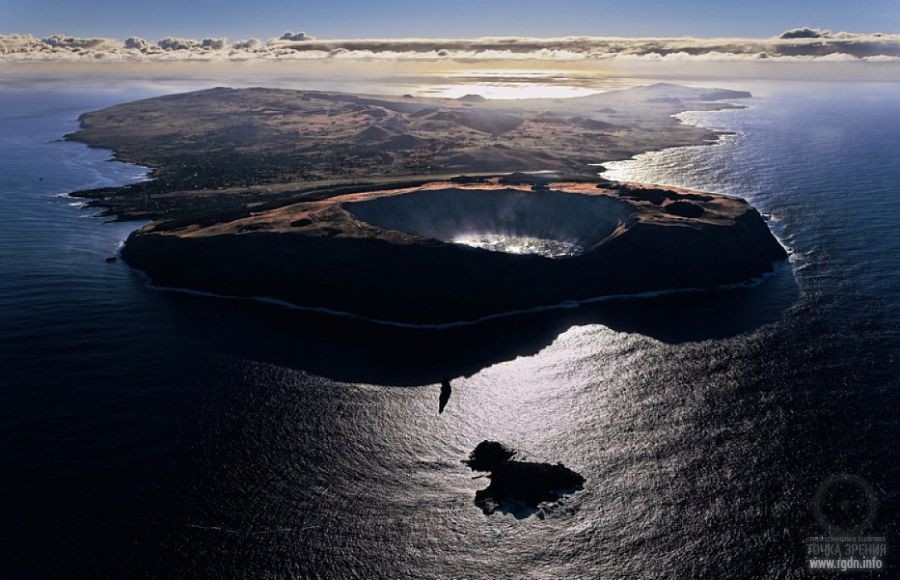
‘Easter Island was called ‘Eyes Looking at Heaven’, but it was also called Te-Pito-О-Те-Henua, ‘The Navel of the World’, a name that was supposedly bestowed on it by the god-king Hotu Matua himself. What is strange is that it shares this name with Cuzco – meaning ‘Navel’ – the incredible megalithic capital of the Inca empire high up in the Peruvian Andes. Moreover, the same name, or idea, was applied in ancient times to many other ritual and sacred ‘places of honour in the middle’. In all cases where there is sufficient evidence to make a judgement, these turn out to have been revered as centres of geodesy and geometry and of the related art of geomancy – a word that means, literally, ‘earth divination’.
Frequently such ‘Navels of the Earth’ also prove to have associations with meteorites – stones fallen from heaven. Many will have their own ‘navel stone’, or ‘sunstone’, or ‘foundation stone’, which will sometimes be accompanied by a tradition of a rod or pillar sunk into the earth or of an obelisk raised up. Each will additionally be depicted as a primordial centre of creation, from which all else grows: ‘The Holy One created the world like an embryo. As the embryo proceeds from the navel outwards, so God began to create the world from its navel onwards, and from there it was spread out in different directions.’
Easter Island has well-established traditions concerning meteorites, which are called ‘Ure Ti’oti’o Moana’. There are supposedly three of them ‘deeply buried in the island’s soil’. In addition a mysterious ‘round tooled stone’, about 75 centimetres in diameter, can be seen to this day sitting near the shore close to Ahu Te Pito Kura, 2 kilometres east of Anakena.
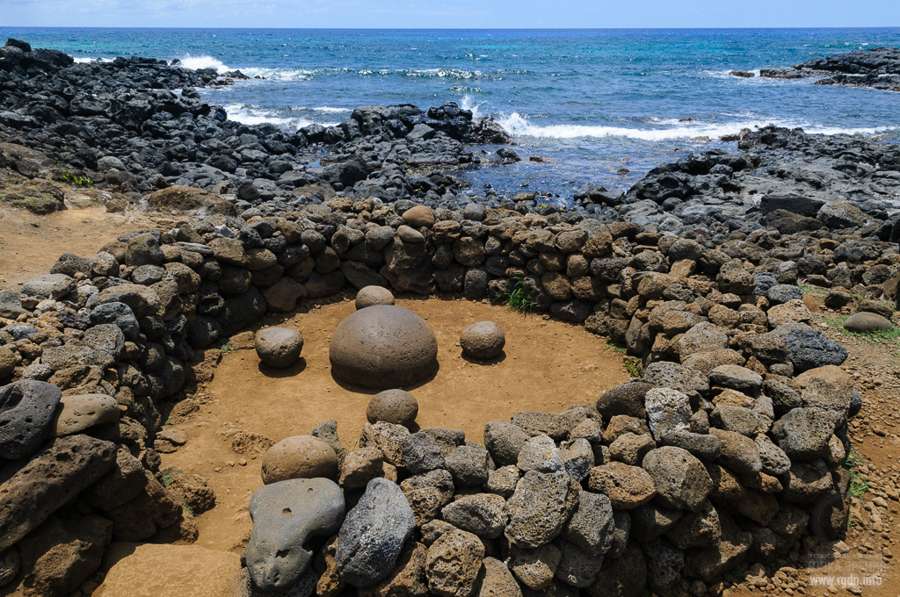
Said to be the navel of the island itself, this is the stone referred to earlier that magicians supposedly used ‘to focus their mana power and so command the statues to walk’. Its name, Te Pito Kura, has been variously translated as ‘the golden navel’ and ‘the navel of light’. It could equally well mean ‘navel of the sun’, a concept extremely close to that of the ancient Egyptian Benben, the sunstone fallen from heaven that stood on a pillar in the centre of the ‘Mansion of the Phoenix’ in the centre of the sacred city of Heliopolis – which was conceived of as the centre of the created universe and the site of the original ‘Primeval Mound’.
Related ideas occur in ancient Israel in connection with the sacred city of Jerusalem:
The Holy Land is the central point of the surface of the earth, Jerusalem is the central point of Palestine, and the Temple is situated at the centre of the Holy City. In the sanctuary itself the holy Ark [of the Covenant] occupies the centre… built on the Foundation Stone [‘Eben Shetiyah’], which is thus the centre of the earth.
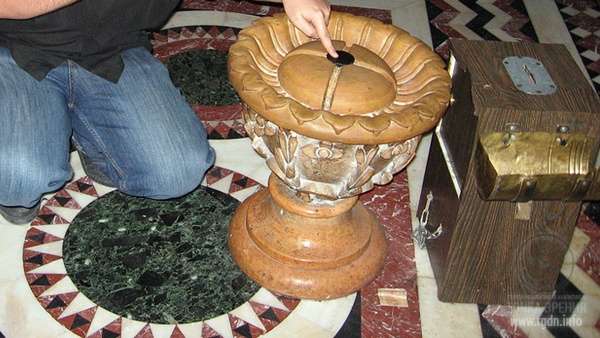
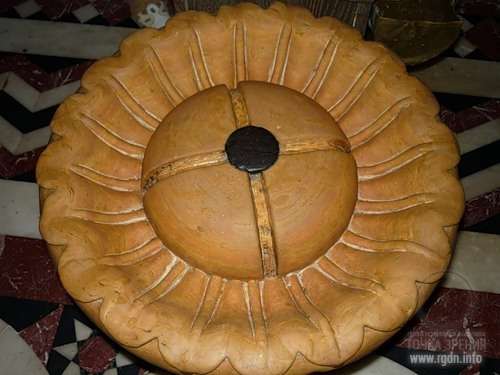
‘There has been reasonable speculation that the Eben Shetiyah may have been a ‘firestone, i.e. meteorite’ – an idea that is supported in the Book of Chronicles and the Book of Samuel, which both speak of ‘fire from heaven’ striking the altar in Jerusalem. Moreover, it is clear that it was not unique but rather one of a class of objects of this sort.
Perhaps, the best known example is the famous omphalos stone of Delphi in Greece, the most prestigious centre of geomancy in the classical world. Like the Benben and the Eben Shetiyah, this ‘navel’ – for that is what omphalos means – was believed the mark the centre of the earth, and to have fallen from heaven. It was specifically identified in Greek mythology as the stone which had been fed to the monstrous time-god Cronus – who devoured his own children – in place of the infant Zeus. When Zeus grew to manhood he took his revenge on Cronus, ‘driving him from the sky to the very depths of the universe’ after first forcing him to vomit up the stone: ‘It landed in the exact centre of the world, in the shrine of Delphi.’
Delphi stands on the slopes of Mount Parnassus, in a vale of great natural beauty overlooking the Gulf of Corinth. Its omphalos was a phallic, pillar-shaped, somewhat conical stone (a symbol of the world egg?). The original has not come down to us but a copy made in the Hellenistic period was found on the site. Carved in relief on its surface is what appears to be a net – archaeologists describe it as a ‘woolly net pattern’ – or a web of some sort. Like the web of the pointed spider, it is difficult to see where it begins and where it ends.
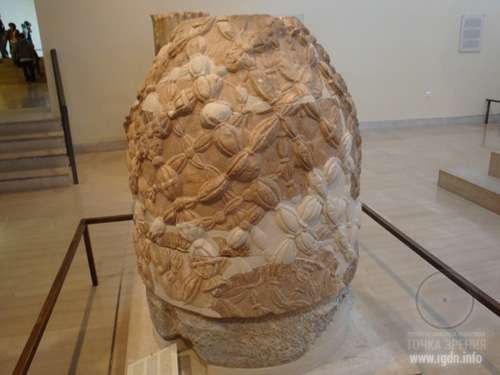
Greek traditions very strongly associate the Delphi omphalos with birds, which is perhaps not surprising, since Greek augurs practised the art of divination by the flight of birds. Two golden eagles (the world duality – matter and Spirit?) are said to have been depicted in effigy upon the omphalos stone, commemorating the belief that Zeus had released two golden eagles from opposite ends of the earth and caused them to fly towards the centre – where they naturally met at Delphi.
Since one bird is said to have flown from the east and the other from the west, their paths would have traced out a great arc, or semi-circle, around the curve of the earth – effectively a line of latitude. As the historian of science Livio Catullo Stecchini confirms: ‘in ancient iconography these two birds [which are sometimes represented by doves as well as by eagles] are a standard symbol for the stretching of meridians and parallels’. Stecchini also specifically argues that the web pattern carved on the Delphi omphalos was intended to symbolize ‘a net of meridians and parallels’ (or the ezoosmic grid).
Delphi was a ‘navel of the world’. So, too, was the Bayon in the network of temples at Angkor, described by Bernard Groslier as ‘the omphalos in Angkor’s stone cosmos’. The same function was also shared by the sacred domain of Giza / Heliopolis in Egypt, which came under the governance of Osiris in his most ancient incarnation as Sokar, the god of orientation and balance, who also held sway over the Fifth Division of the Duat (a division frequently referred to in ancient texts as ‘the Kingdom of Sokar’).
In the Book of What is in the Duat, ‘the Kingdom of Sokar’ features a prominent depiction of an omphalos stone on which perch two birds. A physical example of such an omphalos was excavated in Upper Egypt by the American archaeologist G.A. Reisner in the sanctuary of the great Temple of Amon at Karnak, giving substance to Greek traditions of ‘doves’ flying between Karnak and Delphi. Authorities like Peter Tompkins, who worked closely with Stecchini, and John Michel, in his important study At the Centre of the World, present compelling evidence that a network of such centres, in constant communication with one another, did once exist spread out widely around the globe:
Because of the advanced geodetic and geographic science of the Egyptians, Egypt became the geodetic centre of the known world. Other countries located their shrines and capital cities in terms of the Egyptian ‘zero’ meridian, including such capitals as Nimrod, Sardis, Susa, Persepolis, and apparently even the ancient Chinese capital of An-Yang… As each of these geodetic centres was a political as well as a geographical ‘navel’ of the world, an omphalos, or stone navel, was placed there to represent the northern hemisphere from equator to pole, marked out with meridians and parallels, showing the direction and distance of other such navels.
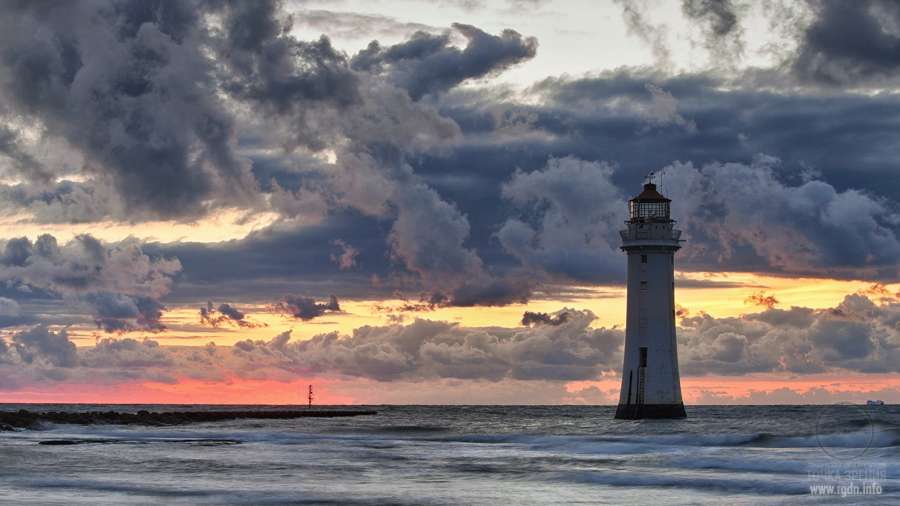
‘The very existence of such an ancient world grid has been staunchly resisted by mainstream archaeologists and historians – as, of course, have all attempts to relate known sites to it (why is it so, when the contrary is present?). Nevertheless, the definite traces of lost astronomical knowledge that are to be seen on Easter Island, and the recurrent echoes of ancient Egyptian spiritual and cosmological themes, cast doubt on the scholarly explanation that the odd name ‘Navel of the World’ was adopted by the islanders for purely ‘poetic and descriptive’ reasons. We suspect that Te-Pito-O-Te-Henua may originally have been selected for settlement, and given its name, entirely because of its geodetic location.
In an imaginary world-grid centred on Giza-Heliopolis, the temples of Angkor lie 72 degrees east of the ‘zero’ meridian, the ruins of Nan Madol on the Pacific island of Pohnpei lie 54 degrees east of Angkor, and the megaliths of Kiribati and Tahiti lie respectively 72 degrees and 108 degrees east of Angkor. If this grid is based on the ‘precessional scale’ then the next significant number should be 144. When we look 144 degrees of longitude east of Angkor (which also happens to be 144 degrees of longitude west of Giza) we find that the only available option in the entire 165 million square kilometres of the Pacific Ocean is Easter Island, which is barely 320 kilometres out of line.
What we are suggesting therefore is that Easter Island might originally have been settled in order to serve as a sort of geodetic beacon, or marker – fulfilling some as yet unguessed at function in an ancient global system of sky-ground coordinates that linked many so-called ‘world navels’.
We have encountered elements of this system in Egypt and in Angkor. One of its great mysteries is the way in which it constantly mingles the most esoteric forms of spiritual inquiry, and the quest for life after death, with a highly scientific approach to observational astronomy and to earth-measuring, Another mystery is its extraordinary extension, not only geographically but also through time, arising phoenix-like in many different cultures and epochs.
We do not claim to know when it first arrived in Easter Island but we think the evidence supports the theory that it became isolated from its sources, and perhaps forgotten, and that it was then subjected to a very long period of impenetrable isolation, during which it underwent a gradual enfeeblement and dissolution. By the time of the first European contacts, which only hastened the process of collapse, there was very little left either of the spiritual or of the scientific aspects of the system.
A network is still a network and if a precessional scale is being used then the next significant number after 144 should be 180, an increment of 36.
Exactly 180 degrees east of Angkor (and 108 degrees west of Giza), and almost exactly as far south of the equator (13 degrees 48 minutes) as Angkor is north of it (13 degrees 26 minutes), a colossal and unmistakable beacon does exist. It is the outline of a trident, or candelabra, 250 metres high, carved into the red cliffs of the Bay of Paracas on the coast of Peru and it is visible from far out to sea.
It seems to point inland, towards the plains of Nazca to the south and the Andes mountains to the east.’
According to beliefs of the Slavs, the earth is surrounded by the World Ocean – Kiyan (somewhat resembles yin-yang; is it another indication of duality?), in the middle of which there is a ‘navel of the world’ – the sacred Alatyr Stone (Apparently, the ancient Slavs knew what Allat – the power of the generative divine feminine principle was). The most widespread description is that the stone lies near the roots of the sacred World Tree – the big oak on the Buyan Island, in the middle of the universe. The Slavs considered the World Tree (or sometimes the Holy Mountains) to be a sort of axis fastening the world together. The Alatyr Stone in Slavic myths is the centre of the universe, the holy rock in the Ripean Mountains, or a rock at the entrance to hell on the bank of the Currant River. Alatyr is not just a mountain or a stone, but the sacral centre of the world – the Primordial Stone...
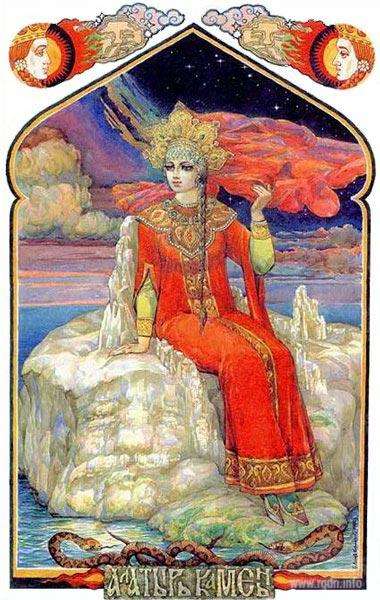
The Alatyr Stone is white and flaming.
It’s the father of all stones in the world.
From under the Alatyr Stone
Swift rivers started flowing
Among forests and fields
Across the whole Universe –
To saturate the entire world,
To heal the entire world.
The Alatyr Stone (Russian ла́тырь: ‘white, flaming stone’) is a sacred stone in medieval Russian literature and Russian charms, ‘the mother of all stones’.
In the Pigeon Book Alatyr is associated with the altar situated in the middle of the world, amidst the ocean on the Buyan Island. Alatyr supports the World Tree or the throne of the universal reign. The stone has medicinal and magic properties: ‘healing rivers spread from under it across the world’ (the Allat energy without which no life is possible!). Alatyr is guarded by the wise snake Garafena and the bird Gagana (a snake and a bird!).
There is also another legend. The flaming white stone Alatyr appeared in the beginning of times. It was lifted from the bottom of the Milk Ocean by the World Duck. Alatyr was very small, so the Duck wanted to hide it in its beak. However, god Svarog uttered the magic Word, and the stone started growing. The Duck was unable to hold it and dropped it. Where the flaming white Alatyr Stone fell down, the Alatyr Mountain rose. In any case, the Alatyr Stone emergence dates back to the time of the creation of the world.
What is the sacral meaning of Alatyr Stone? Alatyr (also olatyr, latyr, altar, vivtar) – the ‘while flaming stone’ – is the beginning and centre of the World. It holds the World Tree on it and sheds life-giving waters. The word altar originates from alatyr.
On Alatyr Stone the wisdom of gods, the laws of the universe, and the covenants left by gods for humanity are inscribed. Since Alatyr bears all guarding symbols, all other amulets are only tiny manifestations of it. All roads start from the stone and meet at it.
Next to the Alatyr Stone the Living Fire of Svarog, the god of creation is always burning. Alatyr embodies power and immortality. When Svarog hit the Alatyr Stone with his hammer, gods were born of its sparkles, and if a sparkle got into a human being he or she got inflamed with a great passion for creative activities.
The Alatyr Stone is a place where gods rest, including the god of justice Perun. Perun strikes sparkles of Alatyr, kindles the thunderstorm flame and brews up a wonder-working drink – the Living Water.
Where is the Alatyr Stone? It is everywhere and nowhere. It’s in every small stone and in mountain masses. Alatyr is impenetrable and beyond the grasp of human mind. It’s the primordial stone, the mediator between gods and mankind.
Furthermore, the symbol of Alatyr is a star with eight vertices (! The eight-pointed star is a symbol of the Blessed Virgin Mary!)
In my opinion, this information is simply incredible and shows that ancient Slavs indeed possessed the Primordial Knowledge…

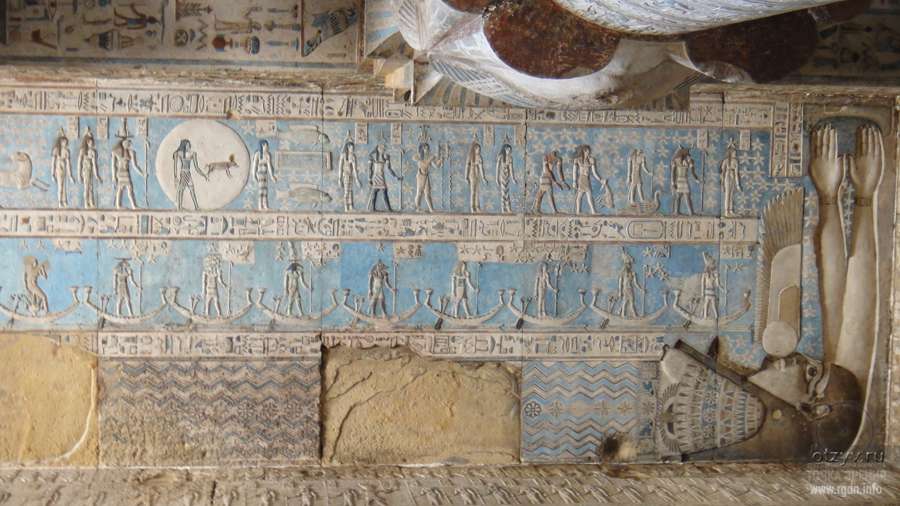
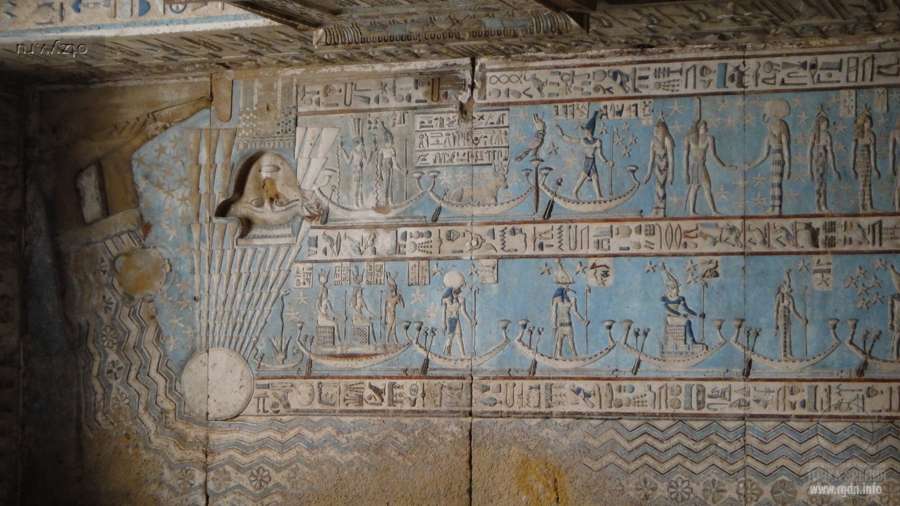
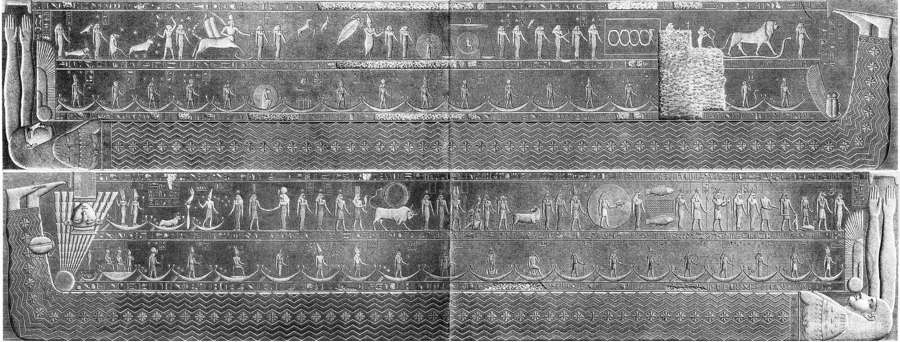
I’ve recalled an extract from Sensei of Shambala (Book IV). When I read it for the first time the extract attracted my attention, but I couldn’t exactly understand the point. Now, everything is gradually gaining a shape of a whole picture…
… As you know, ancient Egyptians called one of the elements ‘Ba’ – the soul, which was the Spiritual Nature foundation. Ba was often depicted as a falcon with a human head and an icon lamp burning in front of it as a symbol meaning that Ba belongs to heaven. People believed stars were a gathering of many icon lamps of blessed Bas, souls of the mother of stars Nut.’ Sensei made a pause and distinctly repeated. ‘Mother of stars! Remember that, later on you will understand why it is so important. Moreover, ancient Egyptians attributed their gods with Bas. For example, the Orion constellation was called the soul of god Osiris. Sotis, or Sirius in our language, was the soul of goddess Isis, the faithful spouse of Osiris… Please remember it, too.
The mother of stars Nut, the divine feminine principle... Isn’t she the one to whom the invisible navel strings lead from the navels-stars on earth?
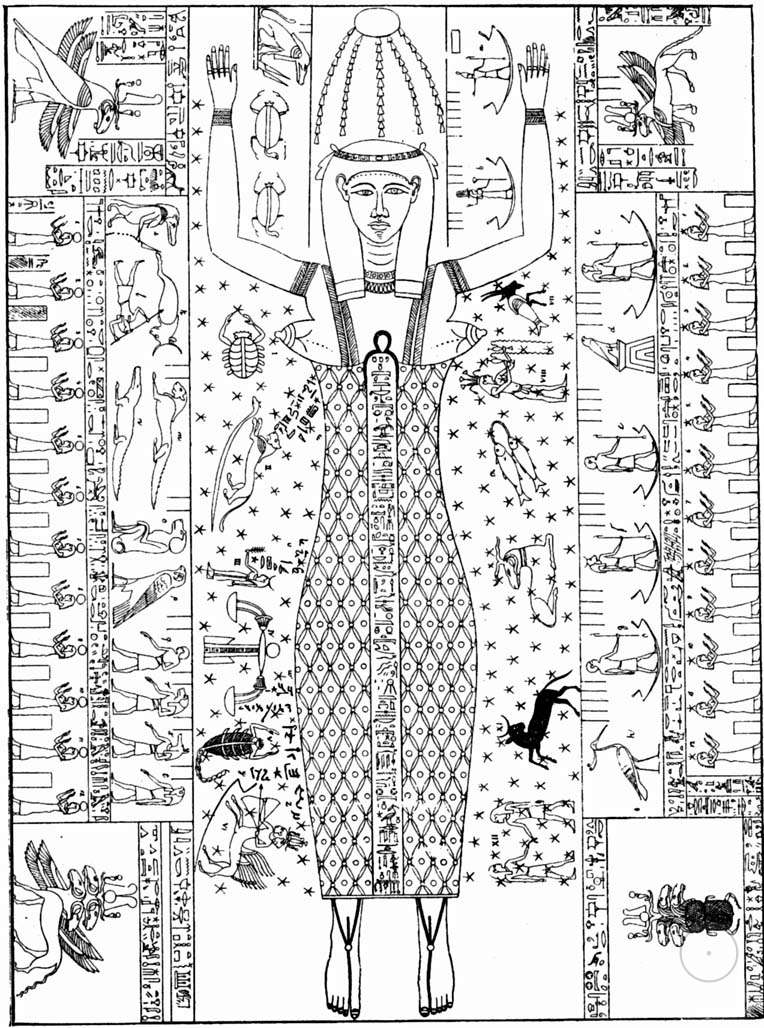
Extract from the PRIMORDIAL ALLATRA PHYSICS report, the Ezoosmic Grid chapter:
Ancient Egyptians believed that the goddess called Nut was the ‘mother of the stars’, ‘one who gives birth to gods’. Her children were the stars which she controlled. She was identified with cosmic space. Initially she was depicted as the Sky (cosmic) Cow, then as a woman Nut, as an ocean and even as a dome/ roof, as the symbol of something hidden behind the visible image, something incomprehensible to man. She fenced the invisible and incomprehensible part of the world from the visible, short-time and temporal part, the eternal world from the temporary earthy world. Sometimes she was depicted on the inner lid of sarcophagus looking at a mummy. Nut images may be found in drawings that decorate the interior of pyramids or sacred texts. These are the images of a woman – the goddess of space, bent in the form of a square, rectangle or dome, stretching across the whole horizon. Her body or clothes, as a rule, have a grid or rhombus-like ornament (sometimes with dots in every square).
On the ceiling of the temple of goddess Hathor in Dendera (Egypt) there is the so-called ‘four-cornered (rectangular) Dendera zodiac’. The bass-relief consists of two halves, both having similar figures of goddess Nut (in the upper part) and god Geb (in the lower part). Goddess Nut is depicted round the universe in the form of a rectangle, thus forming a closed figure similar to a brick. In the middle of her body there is a recurrent rhombus ornament.
Judging by local tombs, grid items made of beads were traditional burial jewellery in ancient Egypt. Such grid wickerwork and patterns were drawn on burial sarcophagi and statues, giving evidence of ancient Egyptian beliefs of the invisible world, the place where people vanished. It is interesting that almost all such grid covers on sarcophagi were executed in blue and green colours and decorated with turquoise beads. That has its special meaning indicating certain sacred knowledge. (Note: In the AllatRa book you can read more about the meaning of blue and green colours in mythology of various peoples of the world).
Thus, there is no doubt the ‘navels of the world’ are places directly connected with the divine generative power of Allat that created the entire universe and plays a tremendous role in support of the planet’s life. This power nourishes every Personality with deep inner feelings which come from the soul as a little part of God in every human being, and gently and motherly calls us back Home…
In earlier articles on our website we considered such mysterious ancient ‘spiritual stars’ as Easter Island, Angkor Wat, the Pyramids of Giza, Teotihuacan, the Temple of Kukulkan, Uluru, Mohenjo Daro, and Kiev Pechersk Lavra. In subsequent materials we will continue studying the most interesting and enigmatic sites associated with the network of spiritual gems that covers our entire planet in a harmonious sequence.
New ‘stars’ on the earth are found nowadays as well, including not just old buildings and external contours of ancient cities, but also geoglyphs – huge terrain images. Thus, a geoglyph called Estrella (the Star) was recently discovered in a rocky area of Palpa in Peru, close to the Nazca desert. ‘The drawing is executed on a rough surface in an unknown way on the area of about 150х150 metres. Quite probably the drawing contains some ciphered information; it is distinguished for the prevalence of geometric shapes gathered in a single easily readable geometric composition.’ http://www.geolines.ru/research/research_95.html?template=117
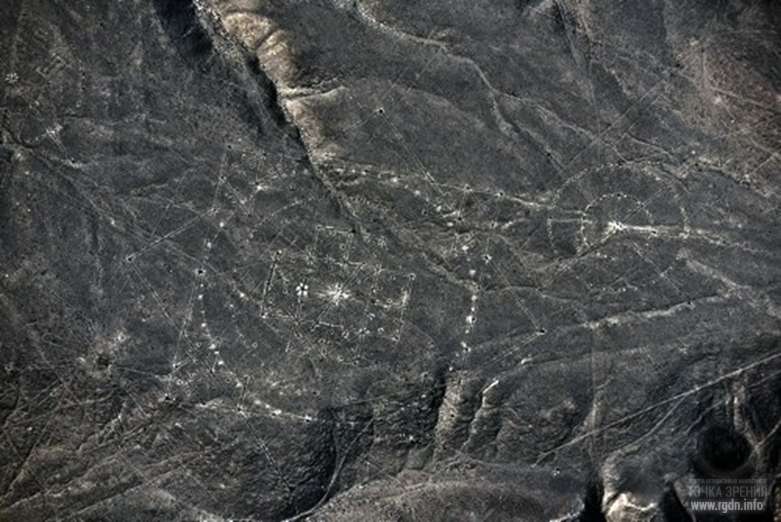
Well, we still have a lot to learn, comprehend and deeply feel. Let me finish the article with one more extract from Heaven’s Mirror by Graham Hancock (Chapter 17. The Stone at the Centre)
The workings of duality
 ‘After Oswaldo Rivera had left for La Paz we stayed behind in the Kalasasaya to watch the sun setting over Lake Titicaca to the north-west and the full moon rising over the peak of Mount Illimani to the south-east. Through the arch of the Gateway of the Sun, standing first one side then the other, it was possible to view both orbs in opposition, 180 degrees across the sky. We could very easily have imagined that the Gateway was the fulcrum of some immense cosmic balance with the sun and the moon in its scales.
‘After Oswaldo Rivera had left for La Paz we stayed behind in the Kalasasaya to watch the sun setting over Lake Titicaca to the north-west and the full moon rising over the peak of Mount Illimani to the south-east. Through the arch of the Gateway of the Sun, standing first one side then the other, it was possible to view both orbs in opposition, 180 degrees across the sky. We could very easily have imagined that the Gateway was the fulcrum of some immense cosmic balance with the sun and the moon in its scales.
On the east-facing frieze Viracocha’s head is surmounted, as is appropriate for the sun-god, by 19 ‘solar rays’. William Sullivan has argued that these rays do not refer to the sun at all but indicate a knowledge of the moon’s 19-year Metonic cycle – ‘the number of years it takes for a particular lunar phase to recur on a given solar date. In other words, if there is a full moon on your birthday, this will not happen again for nineteen years.’ It is equally possible that the 19 rays could symbolize the ‘solstices’ of the moon – the southern and northern extremes of its major standstills – which also occur every 19 years. Far from Tiahuanaco, as we saw in the Introduction, the Callanish megalithic circle in the Outer Hebrides is designed to ‘capture’ the moon once every 19 years at its extreme southern standstill.
It is our conclusion that Callanish, and Tiahuanaco and many of the other monuments that we have investigated all around the world, were part of a great archaic scientific project, the objective of which was the immortality of the human soul. Unless there is something in the way of a Rosetta Stone in the hidden chambers of Giza and of Tiahuanaco, it is going to take years of patient unravelling before it will be possible to arrive at any clear understanding of how that science worked, or where and when it originated (relevant information is already partly available in the AllatRa book).
But we do know that it made use of certain distinctive emblems. It therefore does not surprise us that on either side of Viracocha on the east-facing frieze, are three horizontal rows of beings that have been referred to as ‘angels’. They are all birdmen – men with bird’s wings (spiritually free Personalities), sometimes with bird heads and sometimes with the heads of human beings.
An essentially similar icon of human-headed birds was used in ancient Egypt to symbolize an aspect of the soul – specifically the ba, or ‘heart-soul’. The reader will remember that the ba was thought able to survive in the life hereafter as an independent entity and to have the power of unfettered movement in the Duat like the flight of birds. For this reason it was symbolized as a bird.
Ba souls were frequently depicted by the ancient Egyptians receiving rays of influence (energy, life…) from celestial bodies – the sun, the stars, the moon. It seems to us that the 48 birdman figures on the Gateway of the Sun, 24 on either side of Viracocha (although some have eroded almost entirely away) may be doing exactly the same thing as they crowd in from left to right – like moths around a flame – towards the solar-lunar god. Oswaldo Rivera’s ‘map’ of the Akapana, the pyramid-shaped plinth beneath Viracocha, is also the step-pyramid symbol of the Benben stone – which is itself a symbol of immortal life.
In the falling light we walked slowly around the Kalasasaya and examined its two statues, one an andesite monolith 3.7 metres high, the other sandstone and 1.8 metres tall. Both bore strange objects in their hands. Both incorporated a number of unmistakable aquatic motifs – for example, images of water creatures carved into their waist-belts (water is a symbol of the Spiritual World). Like the astronomer-priests of the ancient Maya and the ancient Egyptians – who in both cases wore leopard-skin cloaks with spots resembling stars – both these statues were depicted wearing garments covered with circular spots.
We looked into the statues’ faces. They were blank, seeming to gaze elsewhere, to gaze through us, like faces from another world. How much more of that world might yet be found if Tiahuanaco could be properly excavated? Of its vast surface-area only an estimated 1.2 per cent has yet been investigated by archaeologists; the rest remains as time and man have left it.
With darkness rapidly closing around us, and an icy wind blowing across the altiplano, we returned to the Gateway and sought out the expressionless eyes of Viracocha’s lion-visaged avatar. Facing east, the old god now had his back to the vanishing sun and gazed towards the rising moon and stars – which he seemed poised to conduct, like a celestial orchestra.
We felt the power of the cold universe – within the vastness of which is fixed mankind, a creature of material form with the divine capacity to choose between good and evil, the spiritual power to receive and to give love, and the intelligence to examine the cosmos with reverent wonder.
And we remembered what the ancients said – that at all times the God of Duality is at work within the cosmos, measuring out its cycles of millions of years, enumerating the stars:
The God of Duality is at work,
Creator of men,
mirror which illumines things.
Mother of the gods, father of the gods, the old god
spread out on the navel of the earth
within the circle of turquoise.
He who dwells in the waters…
He who dwells in the clouds.
The old god, he who inhabits the shadows of the land of the dead,
The lord of fire and time.
Prepared by Julia Matveyeva (Russia)
 Navels of the World and the Soul of the Mother of Stars
votes:
195
Navels of the World and the Soul of the Mother of Stars
votes:
195
|

Project Aim










Leave comment